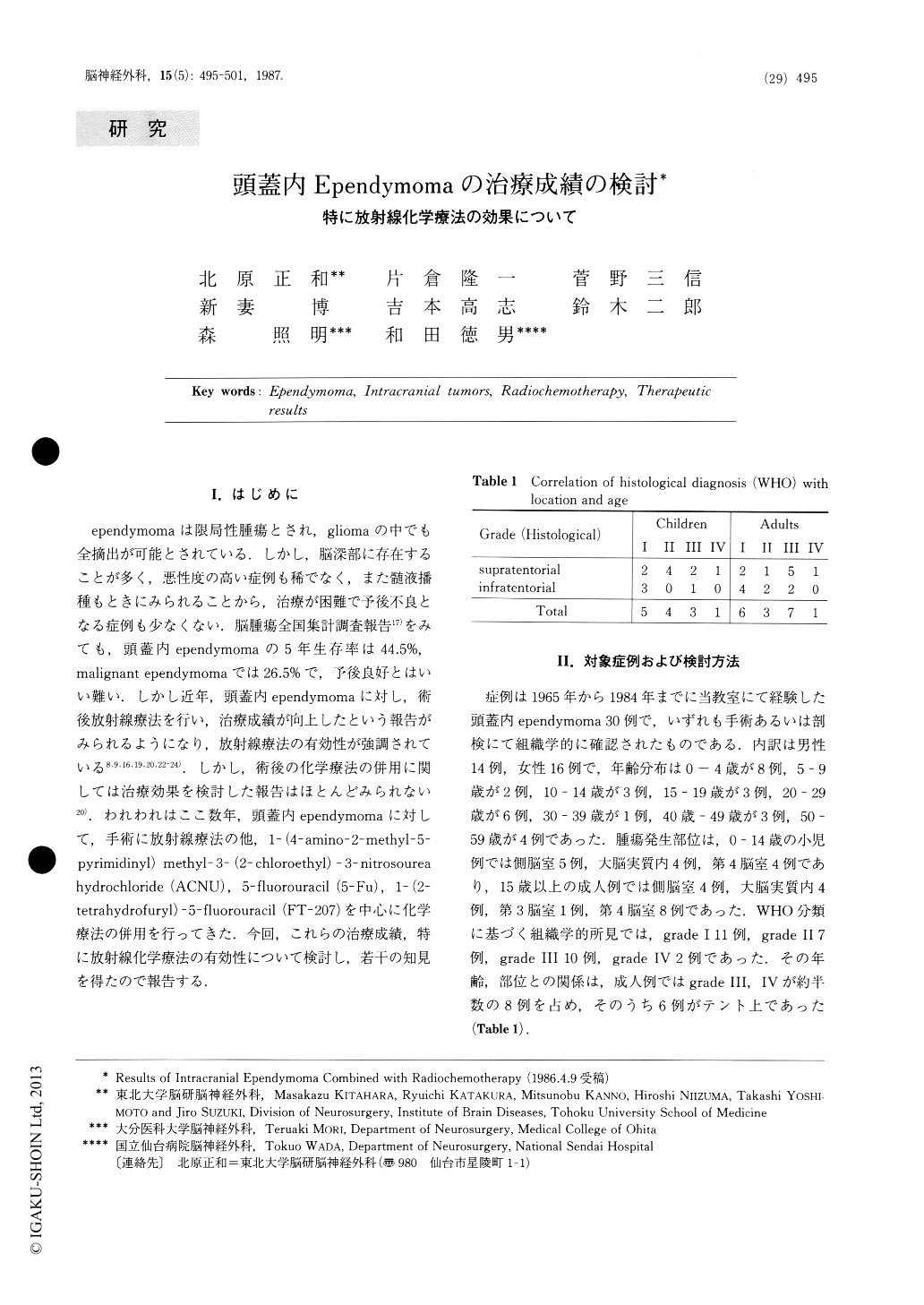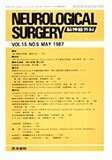Japanese
English
- 有料閲覧
- Abstract 文献概要
- 1ページ目 Look Inside
I.はじめに
ependymomaは限局性腫瘍とされ,gliomaの中でも全摘出が可能とされている.しかし,脳深部に存在することが多く,悪性度の高い症例も稀でなく,また髄液播種もときにみられることから,治療が困難で予後不良となる症例も少なくない.脳腫瘍全国集計調査報告17)をみても,頭蓋内ependymomaの5年生存率は44.5%,malignant ependymomaでは26.5%で,予後良好とはいい難い.しかし近年,頭蓋内ependymomaに対し,術後放射線療法を行い,治療成績が向上したという報告がみられるようになり,放射線療法の有効性が強調されている8,9,16,19,20,22,24).しかし,術後の化学療法の併用に関しては治療効果を検討した報告はほとんどみられない20).われわれはここ数年,頭蓋内ependymomaに対して,手術に放射線療法の他,1-(4-amino-2-methyl-5-pyrimidinyl)methyl-3-(2-chloroethyl)-3-nitrosoureahydrochloride(ACNU),5-fluorouracil(5-Fu),1-(2-tetrahydrofuryl)-5-fluorouracil(FT-207)を中心に化学療法の併用を行ってきた.今回,これらの治療成績,特に放射線化学療法の有効性について検討し,若干の知見を得たので報告する.
Thirty patients with intracranial ependymoma were treated in our clinic from 1965 through 1984. They were 13 children and 17 adults. As for the location of tumor, 9 were in the lateral ventricle, 8 in the cerebral hemisphere, 12 in the fourth ventricle and one in the third ventricle. Histologically, 18 were benign and 12 were anaplastic.
The clinical course was analyzed in 24 cases. Out of the 24 cases, surgical treatment with postoperative radiation therapy was done in 16 cases, surgical treat-ment with postoperative radiochemotherapy in 6, and radiochemotherapy alone in two.

Copyright © 1987, Igaku-Shoin Ltd. All rights reserved.


